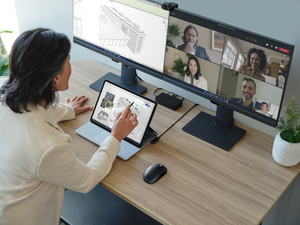
Ditching the Office? Learn from Our Work from Home Experiment!
Lots of organizations are experimenting with “remote work” or “work from home” policies. Protected Trust is no different. Just last year, I (and a few others) decided to launch a two-week experiment to test the work from home concept for our company.
In today’s video, I sit down with some of the Protected Trust crew to discuss the results of the experiment, some concerns about remote work policies, and the impacts of allowing employees to work from home:
Watch the Work from Home Debate:
Launching the Experiment: Concerns about Work from Home
At one point in time, the leadership team here at Protected Trust came to this idea that “not everyone has to work in one place.” We’re constantly espousing the benefits of Microsoft Teams and other collaboration tools that allow people to work remotely, so we wanted to see if the work from home policy could work for Protected Trust.
So, as I say in the video, “we made everyone go home… we said ‘don’t come to the office for two weeks.’” At least, everyone on the support team. The thing that I didn’t know at the time was that a lot of the support team had been anticipating the launch of this experiment not with excitement, but with mild consternation and anxiety.
Steve explains the support team’s concerns in the video, saying that:
“There were a lot of concerns. I’m not going to lie to you, there were a lot of concerns. And I knew that that day was gonna come… Out of every department here, support has four monitors, we have the doc, we have all these things that we have to do. We have to make sure we have good internet—there’s a lot of things that you have to be able to have. Just picking up our cubicle and moving it into somebody’s house. Do they have a room for it? What kind of internet do they have? Do they live out in the sticks like Laurie? There’s all kinds of questions that you have to answer.”
Not everyone has all of the equipment they need to do their jobs just lying around at home. And, for a team that is as dependent on consistent and stable internet as the support team, that can be a limiting factor as well. Being able to answer all of these logistical needs is a must for any remote work policy.
What Did We Learn from the Work from Home Experiment?
One of the biggest discoveries that we made was that work from home isn’t for everyone. As Steve Goodman points out in the video:
“I think we learned a lot about ourselves, too. Because, before we did the two-week thing, we were like ‘All right. We’re gonna let you guys do it. We’re gonna let you live the dream working from home.’ And then, what we found out was that working from home isn’t for everyone. I’m one of those people.”
Different employees work better in different environments. Some employees simply work faster and more consistently in an environment that is tailor-made for work. Maybe they have too many distractions at home. Maybe they don’t have all of the resources they need in the house. Maybe they simply prefer being able to reach over and tap a coworker on the shoulder to ask for advice rather than having to call or message them.
Whatever the reason, some employees are more effective in a more traditional office setting than they are in a home office environment.
Of course, the opposite is true as well—there were a few people who found that they preferred working from home so they didn’t have to deal with the commute.
Another key lesson from the experiment was that working from home changed the way that we evaluate employees. As I say in the video:
“It’s more about the outcome of what you’re doing versus having meetings. It’s like now we’re measuring people not that they came to work 9 to 5 and clocked in. It’s like now we’re looking at people and [asking] ‘did the work get done? Are we getting output from the people that we have hired for?’”
The end result? We found that a lot of people on the support team were actually working harder, getting more done, and working longer hours. Steve attributed this partially to the lack of a set routine—nobody’s watching the clock, so it’s easier to focus on a task.
Is Work from Home Worth It?
While there were a few people on the Protected Trust team that preferred coming into the office, the response was overwhelmingly positive from most employees. The benefits of allowing employees to work from home far outweighed the potential drawbacks to the policy.
Although, as an aside, while work from home policies are beneficial, you may not want to force them on your employees. As Steve Goodman says near the end of the video: “It’s not that you’re working from home—it’s that you have the freedom to choose where you wanna work.”
Does your company use a work from home policy? How has it worked for you? Reach out to let us know—or to ask us any questions you might have!
{{cta('96195129-4483-4690-9ce2-dd238c4c9060')}}


